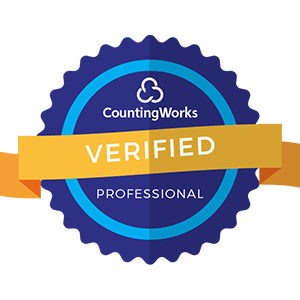
In the fast-paced world of human resources, making informed decisions is crucial for organizational success. With the advent of big data and advanced analytics, HR professionals now have access to a wealth of information that can help them navigate complex challenges and drive positive outcomes. While predictive analytics has gained significant attention in recent years, there's an even more powerful tool that HR can leverage: prescriptive analytics. By going beyond predicting future trends and providing actionable recommendations, prescriptive analytics empowers HR to make proactive, data-driven decisions that can transform the workplace.
Prescriptive analytics is the most advanced form of data analysis, building upon the insights gained from descriptive and predictive analytics. While descriptive analytics focuses on understanding past events and predictive analytics aims to forecast future trends, prescriptive analytics takes it a step further by providing specific recommendations for action. By analyzing vast amounts of data, prescriptive analytics identifies the best course of action to achieve desired outcomes, considering various scenarios and constraints.

For HR professionals, prescriptive analytics offers a game-changing opportunity to make informed, proactive decisions that can drive organizational success. By leveraging prescriptive analytics, HR can:
Prescriptive analytics can help HR identify the most effective recruitment channels, optimize job postings, and streamline the hiring process. By analyzing data on candidate profiles, skills, and performance, prescriptive analytics can recommend the best-fit candidates for specific roles, reducing time-to-hire and improving the quality of hires.
By analyzing data on employee satisfaction, performance, and turnover, prescriptive analytics can identify the key drivers of employee engagement and provide recommendations for improving retention. This may include suggesting personalized training and development opportunities, identifying potential flight risks, and recommending interventions to address employee concerns.
Prescriptive analytics can help HR make data-driven decisions about workforce planning, considering factors such as business objectives, skill requirements, and budget constraints. By analyzing data on talent supply and demand, prescriptive analytics can recommend the optimal mix of full-time, part-time, and contingent workers, as well as identify skill gaps and suggest reskilling or upskilling initiatives.
Prescriptive analytics can help HR design competitive compensation and benefits packages that align with organizational goals and employee preferences. By analyzing data on market trends, employee demographics, and performance, prescriptive analytics can recommend the most effective compensation strategies to attract and retain top talent.
Prescriptive analytics can help HR identify areas where DEI initiatives can have the greatest impact, such as recruiting from underrepresented groups, addressing pay disparities, and fostering an inclusive workplace culture. By analyzing data on employee demographics, engagement, and advancement, prescriptive analytics can recommend targeted interventions to promote diversity and inclusion.

To successfully implement prescriptive analytics in HR, organizations need to follow a structured approach:
Start by identifying the specific HR challenges or opportunities that prescriptive analytics can address. Clearly define the desired outcomes and key performance indicators (KPIs) to measure success.
Gather relevant data from various sources, such as HR information systems, talent management platforms, and employee surveys. Ensure data quality and integrate data from different systems to create a comprehensive view of the workforce.
Develop predictive models using techniques such as machine learning and statistical analysis. These models should be based on historical data and validated using rigorous testing and evaluation methods.
Use the predictive models to generate prescriptive recommendations for action. These recommendations should be specific, actionable, and aligned with organizational goals and constraints.
Implement the recommended actions and monitor their impact using the defined KPIs. Continuously refine and update the prescriptive analytics models based on new data and feedback.

While prescriptive analytics offers significant benefits for HR, there are also challenges and considerations to keep in mind:
Ensuring data quality and protecting employee privacy is crucial when implementing prescriptive analytics. HR must adhere to data privacy regulations and establish robust data governance practices to maintain the confidentiality and integrity of employee data.
Prescriptive analytics may raise ethical concerns, such as the potential for bias in algorithmic decision-making. HR must ensure that prescriptive analytics models are transparent, explainable, and free from discriminatory biases.
Implementing prescriptive analytics may require significant changes to HR processes and systems. Effective change management is essential to ensure buy-in from stakeholders and smooth adoption of new technologies and practices.
While prescriptive analytics provides data-driven recommendations, it's important to balance these insights with human judgment and context. HR professionals must use their expertise and understanding of the organization to interpret and apply prescriptive analytics recommendations effectively.
Prescriptive analytics represents a powerful tool for HR to make proactive, data-driven decisions that drive organizational success. By going beyond predictive analytics and providing actionable recommendations, prescriptive analytics empowers HR to optimize talent acquisition, enhance employee engagement and retention, drive workforce planning, optimize compensation and benefits, and enhance diversity, equity, and inclusion initiatives. While implementing prescriptive analytics requires a structured approach and careful consideration of data quality, ethics, and change management, the benefits are significant. By embracing prescriptive analytics, HR can become a strategic partner in driving business outcomes and creating a thriving, high-performing workforce.
---


